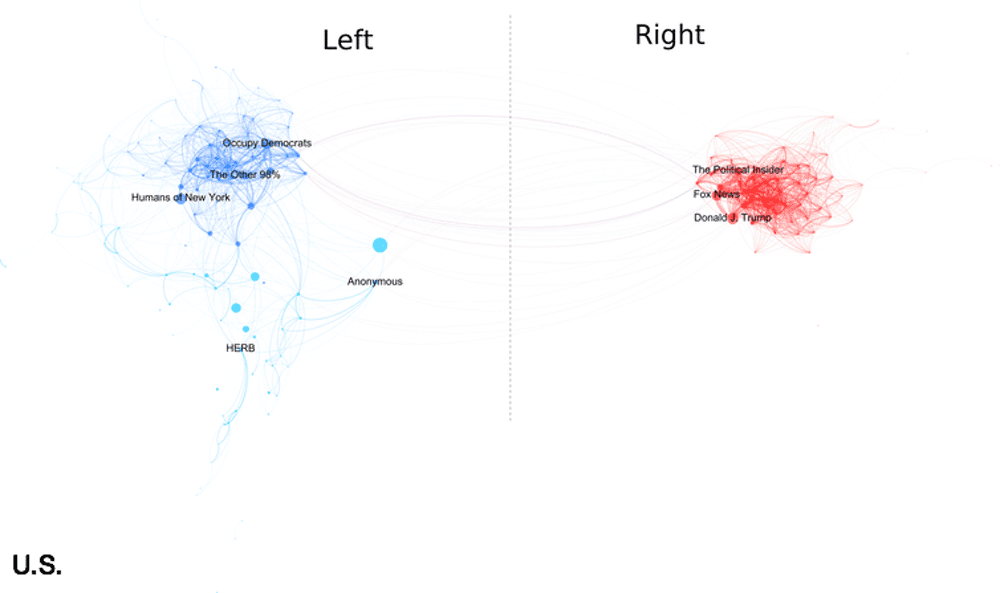Political polarization is a growing issue in America, which can be seen in various aspects of the society. Social media has become a platform to voice political opinions, which often leads to attacks on those with different views creating a toxic environment. Television news channels and newspapers are also seen as biased, resulting in viewers consuming news that confirms their preconceived notions. Political parties have become more ideologically divided and gerrymandering has given unfair representation to a particular party. Fake news, confirmation bias, and echo chambers contribute to the spread of false information and further aggravate the divide between people with different opinions. Certain issues such as immigration fuel the divide between people on the right and left, while political correctness, protests, and riots have become more common, leading to censorship and violence. To build a better America, it is crucial to understand different opinions, promote media literacy, and seek common ground.
10 Examples of Political Polarization in America
The United States is a country divided when it comes to politics. People on different sides of the political spectrum have become increasingly polarized over the years, and it can be seen in a variety of ways. The following are 10 examples of political polarization in America:
1. Social Media
Social media has become a platform for people to voice their political opinions. Unfortunately, this has created a toxic environment where people feel comfortable attacking those with different views. Social media allows people to surround themselves with like-minded individuals, creating a filter bubble that makes it difficult to see the other side’s perspective.
2. News Media
The news media is one of the biggest culprits in political polarization. Cable news networks and newspapers are often seen as having a political bias, leading to people only consuming news that confirms their preconceived notions. As a result, people on opposing sides have vastly different opinions on current events and issues.
3. Political Parties
Political parties play a significant role in political polarization with their respective ideologies drawing people by the thousands on either side. The Republican and Democratic parties have become increasingly polarized, making it difficult to compromise and pass legislation. The two-party system promotes a “us vs. them” mentality and encourages voters to view politics as a team sport.
4. Gerrymandering
Gerrymandering is the practice of redrawing electoral districts to benefit a particular party. It has become a popular tactic, especially during census years when new boundaries are being drawn. This practice creates unequal representation since certain areas become dominated by one party, leading to governmental control in the hands of only one party and the rest of the population left unrepresented.
5. Fake News
Fake news has become a prevalent issue in politics, with people on both sides using it to their advantage. False information can quickly spread online, leading to dangerous rumors and conspiracy theories. This often results in people becoming more entrenched in their beliefs, even when they’re proven to be untrue.
6. Confirmation Bias
People tend to seek out information that confirms their beliefs, a cognitive bias known as confirmation bias. This leads to people only reading news and opinions that align with their views, making it difficult to understand other perspectives. Confirmation bias can also contribute to the spread of fake news since people will believe anything that confirms their worldview.
7. Echo Chambers
Echo chambers are environments in which people are only exposed to opinions that they agree with, shutting out different perspectives. These chambers are formed by choosing to follow certain social media groups or news outlets that favor specific viewpoints. This creates a self-feeding cycle of ideas, where one’s views become more and more extreme and unchallenged in their beliefs.
8. Political Correctness
Political correctness is a hotly contested issue, with people on opposing sides of the political spectrum having different opinions on it. Those on the left see it as a necessary tool to protect underrepresented groups, while those on the right view it as an attack on free speech. Political correctness is often used to silence opposing views and can be seen as a form of censorship.
9. Protests and Riots
Protests and riots have become more common, especially after high-profile cases of police brutality. While protests can be a form of peaceful demonstration, they often lead to violence and destruction. These events further exacerbate political polarization as people view those who disagree with them as criminals and rioters.
10. Immigration
Immigration is a polarizing issue, with people on the left and right having vastly different opinions. Conservatives often see immigrants as threats to American jobs and culture, while progressives welcome them with open arms. The issue becomes more complicated when it comes to undocumented immigrants, with some calling for deportations and others advocating for a path to citizenship.
Conclusion
Political polarization has become a significant issue in America, with its effects being felt in all areas of life. In a country that prides itself on democracy and compromise, it’s essential to find ways to bridge the divide between people with different opinions. These solutions may include promoting media literacy, finding common ground, and engaging in conversations with people who hold other viewpoints. We must find a way to move past political polarization and work together to create a better America for all.
